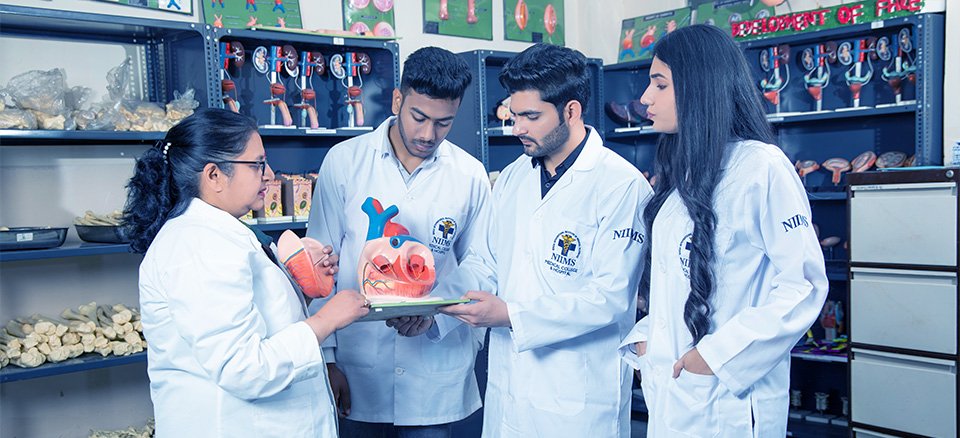A Curriculum That Reflects the Future of Medicine
Medical education is evolving. As healthcare becomes more tech-driven, medical colleges must prepare students for a world where doctors don’t just heal with hands but also with data, devices, and digital precision. At Noida International Institute of Medical Sciences (NIIMS), the MBBS curriculum is a progressive blend of classical learning and modern innovation — creating doctors who are not only grounded in human anatomy but also fluent in medical technology.
Tradition at Its Core: Foundation in Classical Medical Education
At NIIMS, the foundational years of medical education focus on building a deep understanding of human biology, physiology, and pathology through:
Traditional cadaver-based anatomy dissection
In-depth lectures delivered by experienced faculty
Case-based learning for applied understanding
Emphasis on ethics, medical humanities, and clinical etiquette
This classical foundation ensures students respect the sanctity of the profession and understand the core principles of patient care.
Smart Classrooms, Smarter Learning
NIIMS believes that the way students learn is as important as what they learn. That’s why the institute has invested in smart classrooms and digital tools to enhance comprehension and retention:
Digital whiteboards and AV-enabled lecture halls
3D anatomy learning models
Recorded lecture access for revision
e-Library access to journals, reference books, and digital notes
These tools allow students to revisit complex topics, learn at their pace, and collaborate better in group assignments and discussions.
Simulation Labs: Practice Before the Patient
One of the standout features of NIIMS is its high-tech simulation lab, designed to replicate real-life medical scenarios in a risk-free environment. Students train on:
CPR mannequins and trauma dummies
Vital sign monitors and ECG interpretation modules
Emergency room response drills
OT setup and instrument handling
Simulation-based training ensures clinical confidence before real-world patient interaction.
Integrating Diagnostics & Technology from Early Years
NIIMS introduces students to practical diagnostic tools from the beginning. This bridges the gap between theory and practice:
Hands-on training in pathology, microbiology, and radiology labs
Use of digital diagnostic software and hospital record systems
By integrating technology early, NIIMS creates digitally fluent medical graduates ready for 21st-century healthcare systems.
Learning Beyond Borders: Global Outlook
NIIMS encourages students to think beyond the campus. Through:
Webinars with international medical experts
Access to global case studies and treatment protocols
Encouragement to publish research in international journals
This global integration ensures students are not just India-ready, but world-ready.
Tradition Meets Technology at NIIMS
In a world where healthcare is evolving faster than ever, NIIMS Noida stands at the intersection of tradition and transformation. It respects the roots of medical education while boldly embracing innovation — creating a curriculum that prepares students for the real, digital, and future worlds of medicine.
If you’re seeking a medical education that respects the past but is built for the future, NIIMS Noida is the choice that blends both perfectly.



Leave feedback about this